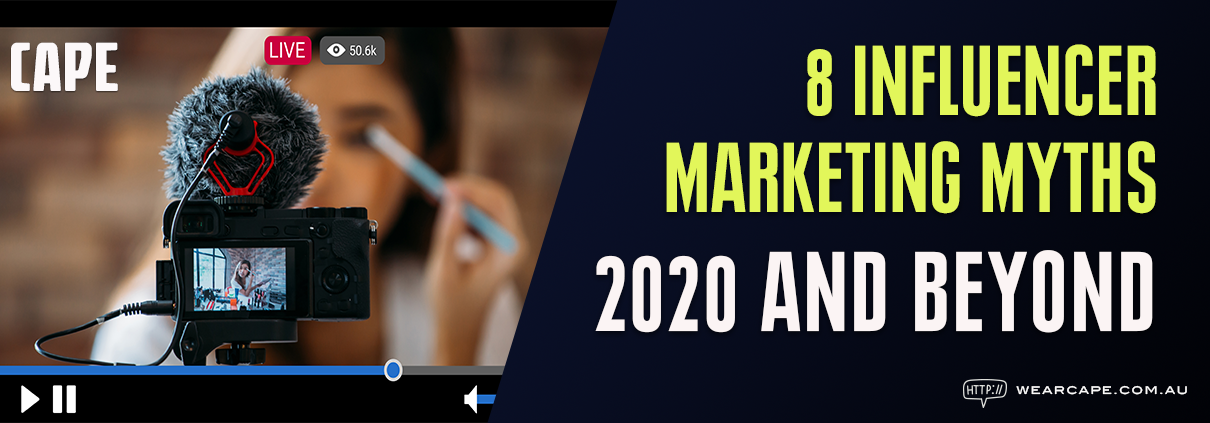8 Myths About Influencer Marketing as we move into 2020
Influencer Marketing is still a powerful way to seed great content and imprint powerful brand associations. As we move into 2020 and beyond, the shape of influencer marketing will evolve, as brands and agencies shift focus from attention to cognitive outcomes.
Here are the eight biggest myths of Influencer Marketing that we see, framed in the content of what is to come in 2020.
- Influencers Work for Free
Meaning if you give influencers a free product, they’ll endorse it for you as thanks. Not anymore – this might have been possible in the past, but we increasingly the influencers you want endorsing your products need payment. Controlling brand risk, adhering to industry and regulatory policies, and the nuances of content value come into play here – we strongly advise brands to use vetted professional influencers, and not recruit amateurs (there is a case to be made for recruiting micro-influencers, but they need to be registered and paid also). - Paid Influencers Aren’t Trusted/Amateurs Are Unprofessional
It might look like influencers simply turn on their camera in their pyjamas and start recording. But this is far from the truth. The influencer industry is far more sophisticated than it was 5 years ago. Nowadays we’re more likely to refer to them as Creators rather than influencers. Influencers or creators nowadays are business professionals. Not only are they experienced and extremely good at what they do, they’re also bound by contractual obligations, training regimes, and protecting their reputation. - More Subscribers Is Better/Big Audiences Equal Success
No. In fact the research finds that Nano and Micro influencers (~5000 followers) in a niche area get way higher engagement and revenue based metrics than mega and celebrity influencers. Gone are the days of celebrity endorsement – social media is where information spreads nowadays, and there is more to it than just being a household name. - Influencers Work Alone
A lot of the time no. They often have support teams, especially if they work for an agency like Cape they’ll have a manager, editing staff, contract agent, and so on. - You Can’t Measure Campaign Success
Well, actually you can. The trick is knowing how to define ‘success’ and which metrics are relevant in accordance with the campaign. Most social media platforms have an API where it is possible to funnel engagement metrics, and tracking pixels may be used to identify a set of user actions (“events”) that contribute to a desired outcome, and assign value to key events. - Influencers Don’t Need Disclaimers
Yes they do. Usually using the hashtags #ad or #sponsored is sufficient depending on the jurisdiction, but failure to disclose brand and product endorsements may violate regulatory requirements and shift liability to the brand. It is critical nowadays to adhere to regulatory guidelines and policies to manage brand risk. - Celebrities Are the Best Influencers
Oftentimes no. Especially if your product is niche – finding an influencer with a niche audience that matches your target audience is often way more effective. In terms of monetary cost, in almost all cases using carefully selected creators and social media influencers is far more efficient than paying top-dollar for celebrities (So 90-ish!). - You Supply the Content
Usually no, depending on the campaign. Influencers are commonly called “creators” for a reason – this is not their first rodeo – they’re usually pretty good at creating content.
To find out how we manage our influencer network, or how we can help your content marketing strategy, please contact us.







